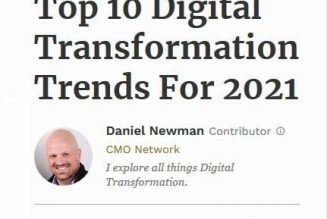With a wave of public sector digital transformation underway, worldwide government IT spending is expected to total $565.7 billion in 2022, an increase of 5% from 2021, says Gartner, with additional investment in cloud platforms and Anything-as-a-Service (XaaS).
Catalysed by the pandemic, governments are committed to accelerating their digital transformation. But Deloitte research shows that most government agencies around the world have a long way to go before they can be considered digitally mature. Only 26% of government agencies polled in eight countries felt they were highly digitally mature.
Deloitte noted that a government that can evolve from ‘doing’ digital or ‘becoming’ digital to ‘being digital’ would significantly improve service delivery and customer experience, enabling universal digital identity, resilient and proactive government operations and real-time data intelligence.
To move towards the digital government ideal, the public sector must first break down silos between data stores and departments, and connect all its people, systems and data with robust, fast and ultra-secure networks.
South Africa’s public sector is cognisant of the game-changing role high-speed access plays: Minister Khumbudzo Ntshavheni noted in the Communications And Digital Technologies Department Budget Vote 2022/23 that Cabinet had approved a revised model and implementation plan for the SA Connect Phase 2 programme, which aims to achieve universal access by 2024.
This revised model will see Sentech and Broadband InfraCo working with Access Network Service Providers, Internet Service Providers and Mobile Virtual Network Operators to roll out 33,539 community Wi-Fi hotspots; while SITA will provide and maintain connectivity to 15,691 government sites over the next three years.
However, high speed and capacity are not the only considerations when implementing networks to support the digital government of the future.
The following five factors must be taken into account when connecting South African public sector agencies:
Security and compliance: As the public sector deals with personal and sensitive information, security and compliance are crucial. SD-WAN is an immensely powerful tool to simplify WAN and branch management, and support connectivity without compromise. SASE (Secure Access Service Edge) – SD-WAN plus Zero Trust security – supports access through a simplified, cloud-native security service with unified policy enforcement, supporting organisations with multi-cloud requirements.
Fit for purpose: For fast, resilient, and secure connectivity, FTTB (Fibre to the Business) delivers speeds of up to 500Mbps, with low latency and the ability to prioritise certain traffic at peak times. However, while high-speed fibre connections are the ideal, these are not always feasible in the remotest regions.
For enhanced branch customer experience, a scalable internet service offers compliant fast, symmetric speeds with ultra-low latency with a number of security options. To support branches not served by fibre networks, Fixed Wireless Access connectivity offers a good alternative for voice and high-speed data traffic. Microwave offers high-throughput bandwidth of up to 1Gbps. Another option where conventional network connections are not available is VSAT satellite connectivity, which delivers speeds of up to 20Mbps with reliable and robust connectivity, as a hybrid of LTE with a roadmap to 5G providing Rate Limited Access for backup and Unlimited for Primary solutions. BCX’s Converged Communications portfolio has a multitude of fit-for-purpose solutions to secure branches and enable compliance as required.
Connectivity for wireless enabled premises For improved user experience and wider coverage, Wi-Fi 6 offers reduced interference, latency and jitter, wider coverage and shared spectrum between multiple users for better connectivity performance. This solves the problem of wireless signal coverage over long-distances to support asset and people tracking for health and safety applications, as well as contact tracing.
Resources: Skilled IT resources are hard to come by, challenging efforts to transform the public sector and harness the opportunities presented by the cloud. Managed infrastructure and cloud services offer a solution to this challenge, ensuring that skilled and cost-effective resources are at the organisation’s disposal to design, implement and manage networks, manage information security and disaster recovery, and support development and new initiatives.
Accessibility: E-government is a wasted effort if the majority of citizens cannot afford to access digital services. To enable this, the public sector can zero-rate access to digital services through sponsored internet, which reverse bills the data used by citizens when they access e-government platforms.
By Sina Mvoko, Managing Executive Public Sector, BCX.










Tagged: Digital Transformation